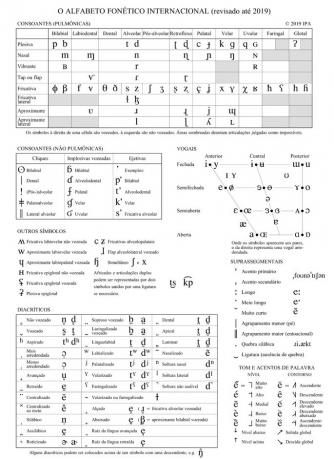Alphabet or alphabet is the set of letters that we use in writing to reproduce speech sounds. The complete alphabet of the Portuguese Language comes from the Latin or Roman alphabet, which is the most used in the world and has 26 letters.
In alphabetical order, the letters of the alphabet are:
Aa Bb Cc Dd Ee Ff Gg Hh Ii Jj Kk Ll Mm Nn Oo Pp Qq Rr Ss Tt Uu Vv Ww Xx Yy Zz
current alphabet
The Portuguese alphabet, updated with the Orthographic Agreement of the Portuguese Language (1990), contains the letters k, w and y.
These letters are used in the following cases:
- To write foreign names or names derived from them, like Kant, William, Kantianism.
- To write internationally used abbreviations and symbols, such as k (potassium), km (kilometer), yd (yard).
Vowels and consonants
There are 7 vowels: a, e, i, o, u, y, w.
The y represents the /i/ sound, while the w represents the /u/ sound. Before the new spelling agreement, there were 5 vowels: a, e, i, o, u.
There are 20 consonants: b, c, d, f, g, h, j, k, l, m, n, p, q, r, s, t, v, w, x, z.
This sum results in a total of 27 letters, which is because w can be either a vowel or a consonant, according to its function in the words in which it is used.
When consonant, w represents the sound /v/.
Thus, in the word "show" the w is a vowel, because it represents the sound /u/. In the word "Walter" the w is a consonant, because it represents the sound /v/.
C cedilla (ç)
The ç is not a letter, but the junction of the sign cedilla with the letter c. The ç represents the phoneme /s/ before the letters a, o, u, like child, lump and sugar.
To know everything about the alphabet:
- alphabet types
- origin of the alphabet
- Greek Alphabet Translated from A to Z
- International Phonetic Alphabet
Bibliographic references
CUNHA, Celso; CINTRA, Lindley. New grammar of contemporary Portuguese. 2. ed. Rio de Janeiro: New Frontier, 1985.

